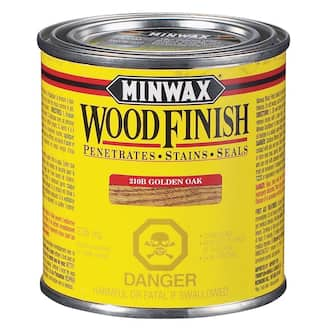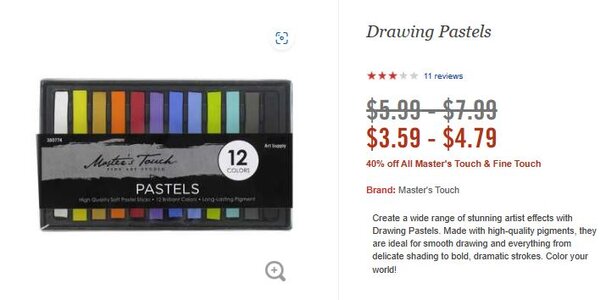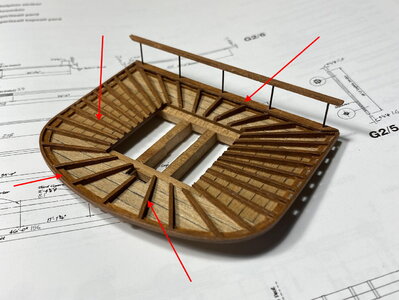Hi, is there a way to paint or stain white maple strips to look as mahogany or walnut wood? Thanks.
You are using an out of date browser. It may not display this or other websites correctly.
You should upgrade or use an alternative browser.
You should upgrade or use an alternative browser.
- Joined
- Dec 1, 2016
- Messages
- 5,136
- Points
- 728

as far as texture and grain no they are 3 totally different woods, but as for color i would think any wood stain would work.
I once bought this wood stain by MINWAX. Tried it. It looked absolutely awful. Tried again with same awful results. Wood color would become deep dirty brown, almost black. I would not cover my fence with this kind of stain. I decided that this is unacceptable and had the can discarded. Do they have some stains that produce a light colored wood surface?any wood stain would work

Last edited:
- Joined
- Dec 1, 2016
- Messages
- 5,136
- Points
- 728

i understand you issue with these wood stains you can not control the color
i have used alcohol-base dye when you want to build color gradually. The alcohol evaporates quickly, so the color doesn't penetrate as deeply as a water-base solution, and you have less opportunity to wipe away color. Several coats can be applied in a short time to reach the desired shade.
i have used alcohol-base dye when you want to build color gradually. The alcohol evaporates quickly, so the color doesn't penetrate as deeply as a water-base solution, and you have less opportunity to wipe away color. Several coats can be applied in a short time to reach the desired shade.
Hi Dave, thanks for a tip. Would this alcohol based wood dye be suitable when I dilute it with alcohol and use as a wash applying many coats?
- Joined
- Dec 1, 2016
- Messages
- 5,136
- Points
- 728

i have used artists chaulk what i have done is to take a piece of chaulk and run it back and forth on a piece of fine sandpaper to create a dust. Then randomly sprinkle the dust on the wood pieces. Using alcohol on a cloth i rub the dust into the wood.
depending on how rough you make the dust and the amount you apply will give you different results. Also if you want a little texture run steel wool over the wood first. The texture from the steel wool will give the surface different tones of color.

depending on how rough you make the dust and the amount you apply will give you different results. Also if you want a little texture run steel wool over the wood first. The texture from the steel wool will give the surface different tones of color.

- Joined
- Dec 1, 2016
- Messages
- 5,136
- Points
- 728

you can learn a lot from this forum on staining and finishing models
My Second Sierra West Model
I just received my Water Tank and Handcar Repair kit today. Of course I opened box and had a look at what was inside.
craftsmankituniversity.com
Thanks. I will try this. I purchased some crayons to try.
I'm surprised that this stain would darken maple that much. I have Minwax Golden Pecan, and it barely darkens light hardwood, but does certainly color it. Stains tend to darken heavy grain (which you don't have) and rough areas (which you may have). Perhaps the wood was rough? Or maybe just bad stain, as that is very unexpected. With oil stains and hardwood like maple, the hardest thing is usually getting it dark enough. Edges of stripwood, which are usually rougher, tend to stain darker, but that usually doesn't hurt when used as planking.I once bought this wood stain by MINWAX. Tried it. It looked absolutely awful. Tried again with same awful results. Wood color would become deep dirty brown, almost black. I would not cover my fence with this kind of stain. I decided that this is unacceptable and had the can discarded. Do they have some stains that produce a light colored wood surface?

Maple, in my experience, has always been a difficult wood to stain dark, as it is so hard with so small pores and grain, it doesn't absorb much. While I prefer oil-based stains, like you used, I find that water-based stains (also made by Minwax and Varathane, etc.) do stain wood darker and more immediately, not requiring multiple coats, unlike oil-based, and may be more suited to your needs. Take a piece of your maple to your local Lowes, Home Depot or other building supplies center. In my experience, they will open several stains and try each one on your wood for you, letting you pick the one you like best.
As to using maple to simulate mahogany or walnut, grainwise, it is actually excellent when used on a model. While maple grain is barely visible, and walnut and mahogany are quite pronounced, for a model of just about any scale, you would never be able to see the grain, so maple is excellent. Even better than pear, but without the rich color IMHO, although it can be hard to work.
I have a theory in my head that wood color is affected by a sense of scale as much as the physical size of parts. Take oak color for example…stain a piece of boxwood with MinWax light oak stain and, in scale, it appears too dark. So one has to use a lighter color stain to achieve the light oak color in scale. I have used MinWax “Natural” stain to achieve very good oak color on model planking. Natural is very light in tone but provides a nice oak color in scale. Also, I have used straight matte sheen polyurethane on deck planking and it toned the decking enough by itself to provide a nicely toned deck color…especially settling into the cracks, crevices, and treenails to nicely bring out those features. So when I am faced with wanting to color or tone wood for the model I start out with stain colors several shades lighter than what I am wanting for an end result…and in scale…it usually turns out right. Another technique I use is to dilute the stain. I use MinWax water based stain…pipette a small amount to a container and dilute with water. Then rub on with a rag. One more technique I use is to use acrylic paint as a stain. I again place a small amount of paint in a container and dilute with water then rub on with a piece of cloth. For example, use mahogany acrylic…dilute…rub on…and a nice mahogany tone can be achieved. The acrylic does not wick into the wood as does stain. Each of these techniques produces a “diluted” color tone control which looks more to “scale” than straight stains and paints achieve.
Last edited:
I agree completely. When I modeled scale plastic aircraft, I and others would lighten colors based on the scale used. The smaller the scale (like 1/72), the lighter or more faded the color, the larger the scale (1/18), the darker or more true the color. We would add a percentage of white to any given (darker) color, to "fade" it and make it look more scale. For very light colors, especially white, adding a percentage of gray has a similar affect. Often I would use gray to fade darker colors as well.I have a theory in my head that wood color is affected by a sense of scale as much as the physical size of parts. Take oak color for example…stain a piece of boxwood with MinWax light oak stain and, in scale, it appears too dark. So one has to use a lighter color stain to achieve the light oak color in scale. I have used MinWax “Natural” stain to achieve very good oak color on model planking. Natural is very light in tone but provides a nice oak color in scale. Also, I have used straight matte sheen polyurethane on deck planking and it toned the decking enough by itself to provide a nicely toned deck color…especially settling into the cracks, crevices, and treenails to nicely bring out those features. So when I am faced with wanting to color or tone wood for the model I start out with stain colors several shades lighter than what I am wanting for an end result…and in scale…it usually turns out right.
This is a quote from IPMS Prison City Modelers:
The Scale Effect of Color and other considerations
...................
To adjust the color: From the 1988 The IPMS Color Cross-Reference Guide, the following metric to add lighteners to the paint were:
- 1/32 – add 7% white to your color
- 1/48 – add 10% white
- 1/72 – add 15% white
- 1/144 – add 23% white
One caveat: Adding white as a lightening color might not be the best. For figure painting, often buff is used, but it differs depending on what the base color is. For example, if you have a red base coat, and add white to lighten it, you really would have pink highlights. However, if you look closely, yellow or buff may actually be a better work-around to lighten the color. Best advice—practice off the model or on a scrap test piece with the various effects.
I forget the exact rule of thumb we used at the time, which was based on a simple mathematical conversion of the scale, but this gets the idea across. Bright tiny models look like toys, not like the majestic sailing ships seen from afar that we are trying to reproduce.
Last edited:
Signet…awesome!
How attached are you to the white maple? It might actually be easier, and more satisfying as to wood tone, to not try to tone white maple to mahogany or walnut but rather get some actual mahogany or walnut strips. Use the white maple for something else???Hi, is there a way to paint or stain white maple strips to look as mahogany or walnut wood? Thanks.
- Joined
- Mar 27, 2022
- Messages
- 3
- Points
- 3
I suggest you use a water based stain or dyes that are applied, then wiped off, then applied and wiped off again, in successive applications until you get the colour you like. If you do not eventually reach that goal, wet it down and wipe the whole thing clean again, and give it a light sanding. Much more workable than an oil based stain. Lee Valley sells a whole lot of powder dyes that I mix in a preserves jar. Very nice stuff, and pretty inexpensive. You can mix up any size batch and save the rest of the powder. Make a dark mix, or make a light mix, of the same dye. Or mix colours.
Or you can buy containers of dye/water stain from the hardware store, I suggest using Saman water stain in the 8oz 236ml plastic bottle. The nice thing about all this stuff is that the part or piece is workable right away.
JD
Or you can buy containers of dye/water stain from the hardware store, I suggest using Saman water stain in the 8oz 236ml plastic bottle. The nice thing about all this stuff is that the part or piece is workable right away.
JD
- Joined
- Jun 17, 2021
- Messages
- 1,667
- Points
- 488

All of the above. Minwax oil base has it's uses and virtues. Model making does not seem to one of them. I got some Trans Tint brand dyes from the Woodworker's Club, which come in tiny bottles and are intensely concentrated. A few drops in denatured alcohol makes Quarts. one bottle will last several lifetimes. They come in a variety wood colors. Alcohol analine stains are not light fast. Oil based stains are. As to water based I have no idea. I have enjoyed using Mahogany and walnut on my models. On the racing yacht Britannia I used yew wood which is very hard, a very mellow warm brown and VERY British. Whatever floats your boat, so to speak. Experiment! Make lots of test samples ( like potters do endlessly) Follow all of the above advice.
Happy Modelling!
Pete
Happy Modelling!
Pete
Depending on the amount of staining you are doing, you could try those furniture repair kits--I have one that is like a marker pen and there are two colours--light and dark! You control the shade by the amount you use.
Hard and soft maple are hard to stain. Close pored and/or blotchy. Dye is probably the way to go. Here is one search result from "lightfast wood dye"
For a different look MicroMark used to sell a liquid that grayed wood giving it a weathered appearance
Lightfastness of Dyes and Stains
Finishers discuss the differences between dye and stain chemistry in this thread. The differences between dyes and pigments include varying resistance to light degredation. June 28, 2005
www.woodweb.com
Hi Signet. Thanks for your comments. They were very useful.I'm surprised that this stain would darken maple that much......
How attached are you to the white maple?
Hi danielsje. I am attached to white maple because this is only decent wood type sold in our Home Depot and I purchased some of it. It appears it is good wood to work with by using scalpel, lathe or table saw. It does not ever split as walnut and mahogany does. I love working with maple but do not like its color.
Here is an example of coloring the maple. Planks marked with red arrows are maple colored with a wash made of water diluted brown acrylic paint. I applied it over a complete assembly. Color came out too dark as I had to apply many layers. The areas with glue did not take a color well. I was not too happy with the results. It started to look better when I applied a transparent acrylic lacquer over the whole assembly.





